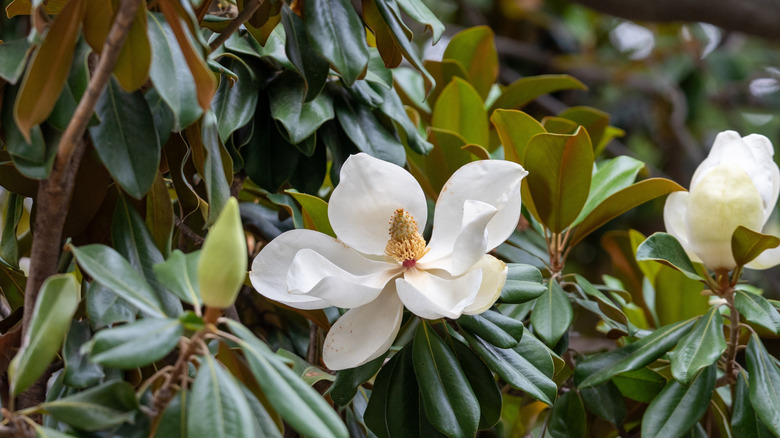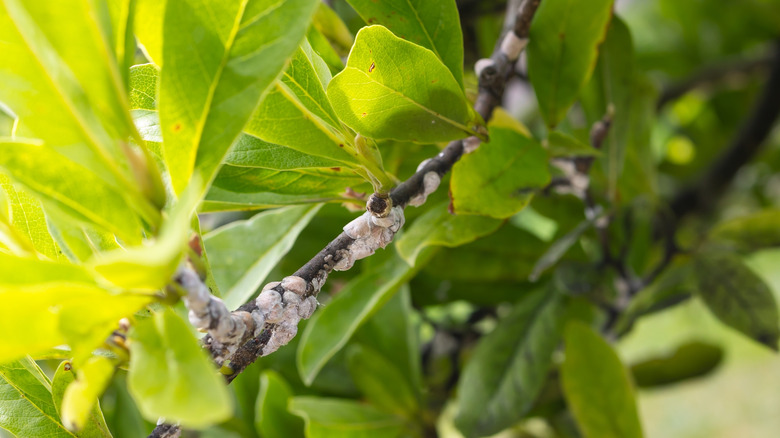Prevent Magnolia Leaf Drop Before It Becomes A Bigger Problem
We may receive a commission on purchases made from links.
The magnolia tree (Magnolia grandiflora), with its radiant glow, has the potential to level up the appeal of any lawn, garden, or walkway. Its white, pink, and purple-hued flowers can turn heads toward even the dullest garden. But, as with any plant, these dazzling trees will show signs of distress if they need a little TLC. Magnolias are prone to leaf droppage during seasonal changes. However, excessive dropping can be one of the biggest tell-tale signs of an issue with the plant's overall health that should be addressed immediately.
Gaining some insight into the most common culprits of magnolia leaf loss is the key to preventing it from worsening. Some of these factors may include pest infestations, plant disease, and hydration issues. The good news is that with a bit of investigating, you can counter any issues you have with this gorgeous flowering tree, as ignoring it for too long is a no-no and can pose serious risks to the life of the tree. Note that prevention can come in many forms, and sometimes a multi-pronged approach may be needed to return your tree back to optimal health.
Solutions for common causes of magnolia leaf drop
Magnolias can be susceptible to leaf damage from hungry spider mites, aphids, and magnolia scale, resulting in leaf loss. Checking your tree's leaves and branches for infestation signs (such as white flakes or a sticky substance) can help determine if these are the root cause of your tree's issue. If so, an application of horticultural soap, homemade bug spray, or another other insecticide like Bonide Captain Jack's Neem Oil could help rid your plant of these nuisances.
In some cases, excessive leaf loss is the result of plant disease such as crown gall, canker, or bacterial blight, which can spread across the body of a tree, slowly (and sometimes aggressively) eating away at its bark and vines. After you identify if your tree is diseased, specific treatments may vary, but cutting away any infected leaves and branches is usually crucial to restoring its health. Some experts also recommend going over the infected areas with something like Bonide Captain Jack's Copper Fungicide to kill the infection — but always check the label for specific usage instructions.
Sometimes your magnolia tree may H20 issues — it's either getting too much or too little. Magnolias tend to thrive in hardiness zones 6 through 10 and can be invasive in some cases. Overall, many magnolia tree varieties do best in warm weather and in soil with balanced moisture and temperature levels. Using a soil moisture meter (they cost as little as $10) helps with keeping its hydration levels in line and saves you the trouble of "guesstimating."

